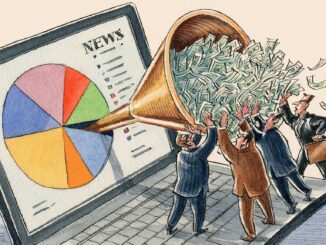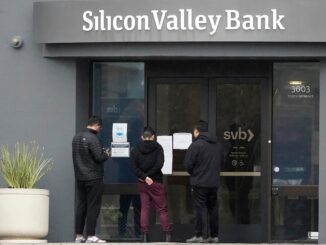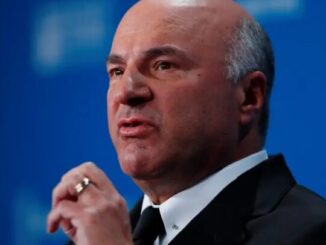
The United States government launched emergency measures at the weekend to shore up confidence in the banking system after the failure of Silicon Valley Bank (SVB), the largest bank collapse since the 2008 financial crisis.
European bank stocks fell on Wednesday with Credit Suisse diving as much as 30 percent on renewed investor concerns about stresses within the sector.
The US government implemented the measures under heavy pressure from California’s tech industry to act. SVB’s collapse fuelled several long and dramatic days in Washington and beyond.
Here’s a look at how things unfolded:
March 9
As US Treasury Secretary Janet Yellen prepares for a Friday hearing before the Republican-controlled Ways and Means Committee in the House of Representatives, investors are raising concerns about a liquidity crisis at Silicon Valley Bank, sending the stock plummeting.
Questions had been swirling for weeks around the tech-focused bank, which had assets of $209bn, and a quickening pace of withdrawals triggered alarm bells.
Amid concern the bank would not last the weekend, the Federal Deposit Insurance Corporation (FDIC) and Federal Reserve Board decide to move it into receivership.
Yellen’s staff plans a meeting with the Office of the Comptroller of the Currency, the Federal Reserve and the FDIC for Friday.
March 10
Officials arrive to close the bank at its Santa Clara, California, headquarters before West Coast branches opened at 9am (16:00 GMT).
US President Joe Biden is briefed on the SVB situation by his new chief of staff, Jeff Zients, and former Fed Vice Chairwoman Lael Brainard, who took over as director of Biden’s National Economic Council on February 21. Meanwhile, Yellen testifies for three hours in a contentious congressional hearing. Only one lawmaker asks about SVB.
Yellen assures Congress she is monitoring events surrounding “a few banks” and says any bank’s financial losses are concerning.
She holds a 1pm (17:00 GMT) virtual meeting with Fed Chairman Jerome Powell; FDIC Chairman Martin Gruenberg; Michael Hsu, acting comptroller of the currency; and Mary Daly, president and CEO of the San Francisco Federal Reserve Bank.
At 2:30pm (18:30 GMT), the US Treasury issues a statement about confidence in regulators and the overall resilience of the US banking system.
Some tech investors start offering cash to prop up their companies. Others take to Twitter to push the Biden administration to act.
Late on Friday, Treasury officials brief lawmakers. One Republican staffer seeks assurances the plans will not lead to more regulation.
The FDIC makes a record withdrawal of $40bn from the Treasury General Account as it seizes control of Silicon Valley Bank. The amount is many times larger than any previous draws.
March 11
Regulators learn a second bank, New York-based Signature, which had almost a quarter of its deposits in the cryptocurrency sector, is facing similar liquidity problems.
US Treasury staff hold virtual morning meetings and decide to: 1) look for a buyer, 2) provide a systemic risk exemption to protect depositors, 3) revamp the terms of a Fed facility to permit more borrowing.
Yellen meets again with Powell, Fed Vice Chairman for Supervision Michael Barr and Gruenberg, and they agree to do all three. The rush is on to assure SVB’s corporate depositors that they can make payroll on Monday and get ahead of Asian markets opening about 22:00 GMT on Sunday.
The government says depositors will be “made whole” but the bank’s management will be removed and its investors will lose their funds.
US officials jump into “hundreds of Zoom calls” and answer emails from tech industry executives, anxious lawmakers worried about small businesses in their districts and business owners who fear they will have to lay off workers, a White House official says.
Garry Tan, CEO of start-up accelerator Y Combinator, fearful of what he calls a potential “extinction level event” in the tech sector, launches a petition signed by more than 3,500 CEOs and founders, appealing directly to Yellen.
On Saturday evening, more than 600 Washington VIPs, including administration officials, lawmakers, reporters and editors gather for the annual white-tie Gridiron Dinner. Brainard and a key aide to Yellen both cancel at the last minute.
Treasury staff hustle to get Yellen on CBS News’s Face the Nation programme on Sunday to reassure markets.
March 12
Yellen arrives at CBS News in Washington before 8am (12:00 GMT) to tape a nearly 13-minute-long segment on the SVB situation. Federal officials are working on a “timely” solution, she says, and rules out a bailout.
Meanwhile, the FDIC’s auction of SVB’s assets is not going well, and the pressure is on to finalise the other options before Asian markets open. Two early suitors – PNC Financial Group and the Royal Bank of Canada – back away.
Without a deal, the Fed and FDIC boards vote unanimously to proceed with plans hammered out over the past two days. Shortly after 6pm (22:00 GMT), New York regulators close Signature Bank.
The Federal Reserve, Treasury and FDIC issue a joint statement outlining plans to protect depositors at Silicon Valley Bank and Signature.
The Treasury and White House reach out to members of Congress and their staffs throughout the evening to explain the plan with discussions continuing into Monday.
March 13
Just after 9am (13:00 GMT), Biden makes a four-minute statement, pledging to protect depositors and promising to prevent similar situations by strengthening bank regulations.
The remarks don’t soothe markets immediately, but by Tuesday, they have calmed.
March 14
The FDIC says its withdrawal of a record $40bn in US Treasury funds on Friday as it seized control of Silicon Valley Bank will have no effect when the Treasury runs out of operating room under the debt ceiling.
The Federal Reserve is considering tougher rules and oversight for midsized banks, according to a source familiar with the matter.
A review of the $209bn bank’s failure being conducted by Barr could lead to strengthened rules on banks in the $100bn to $250bn range.
March 15
The top US markets regulator renews a promise to prosecute any misconduct threatening global markets, saying it had a responsibility to protect market resiliency.
“Lest we forget, eight million Americans lost their jobs, millions of families lost their homes and small businesses across the country folded as a result of the financial crisis of 2008,” US Securities and Exchange Commission Chairman Gary Gensler says.
US Senator Elizabeth Warren, pushing for tighter regulation, tells CNBC any stress-testing of financial institutions needs to be done by an outside entity.
European bank stocks slump with embattled Credit Suisse tumbling as much as 30 percent to a record low. Europe’s bank index sees more than 120 billion euros ($127bn) evaporate in stock value since March 8.
In the US, regional banks also fall with First Republic Bank down 16 percent, Western Alliance Bancorp down 8 percent and PacWest Bancorp off about 24 percent. Big US banks such as JPMorgan Chase, Citigroup and Bank of America slide between 3.5 and 5.5 percent.
Biden administration quickly put emergency measures in place as SVB failed. Here’s how it all unfolded.
ENB Top News
ENB
Energy Dashboard
ENB Podcast
ENB Substack



